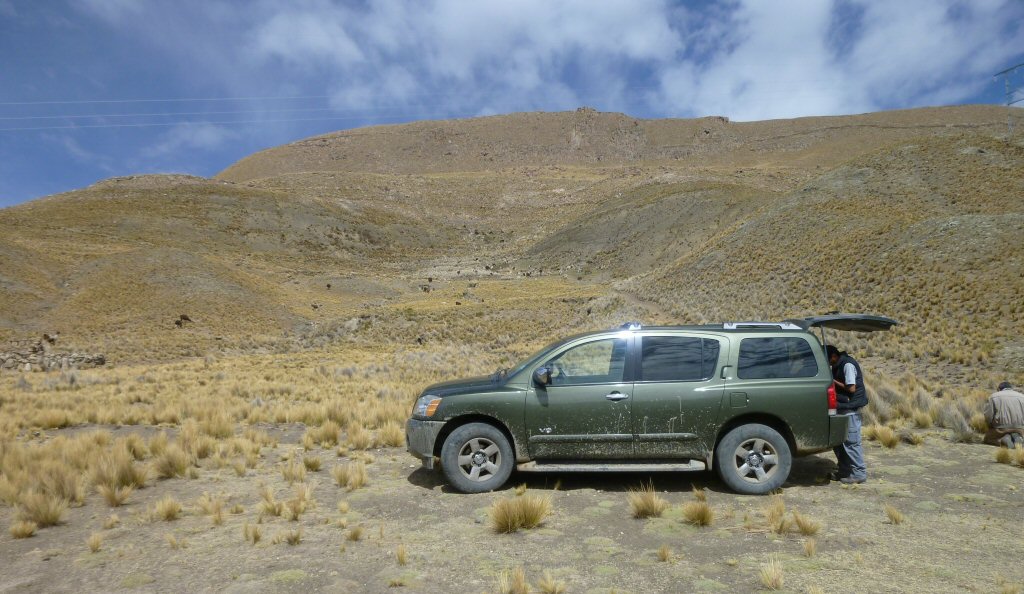

Luis Gutierrez was first to draw my attention to an ancient mountain fortress called Inca Pukara 18°19'18"S 66°47'18"W, altitude 4,444 m (14,580 ft), located near the tin mining complex of Huanuni, south east of Oruro, Bolivia. Along with Lizet Ustárez (Lis) of Explorers Inn Oruro and Carlos Bedregal of the La Patria newspaper in Oruro, we made an expedition to the site in September 2011. Here are a few of the images taken on the trip. A further investigation was undertaken in 2012 by a team consisting of Carlos Bedregal Salinas, Luis Henry Gutiérrez Flores, Lizet Ustárez Benavidez, Daniel Bedregal Miralles, Carlos Bedregal Miralles y Jesús Quispe.
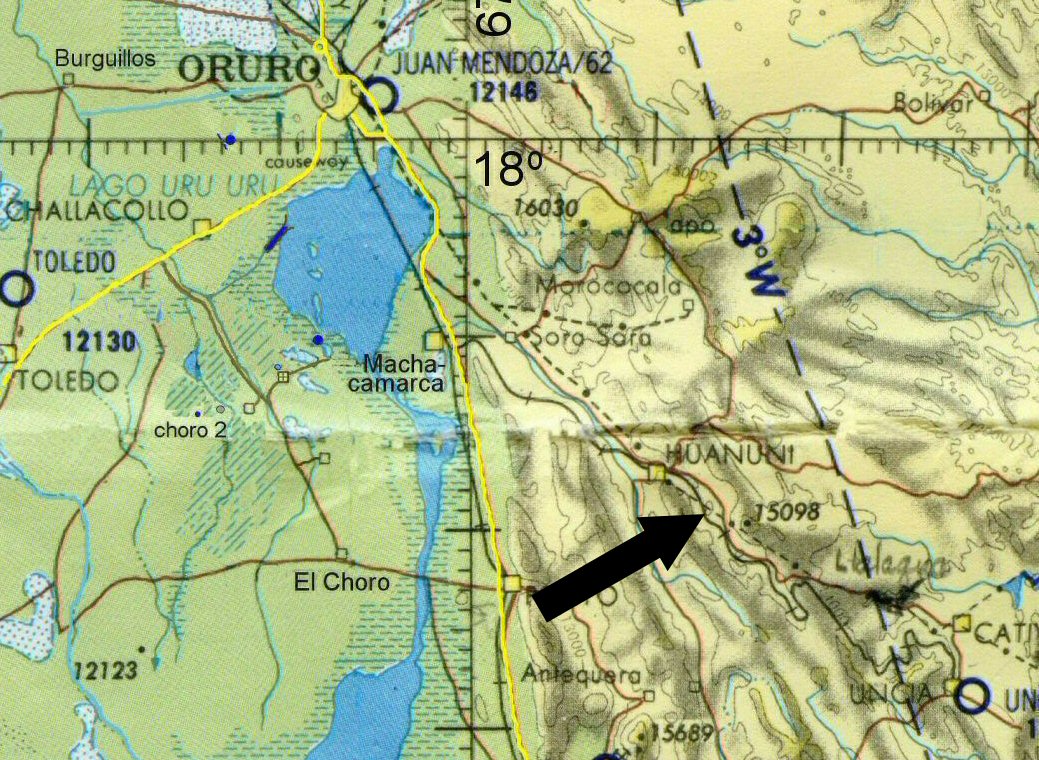
Location Map.
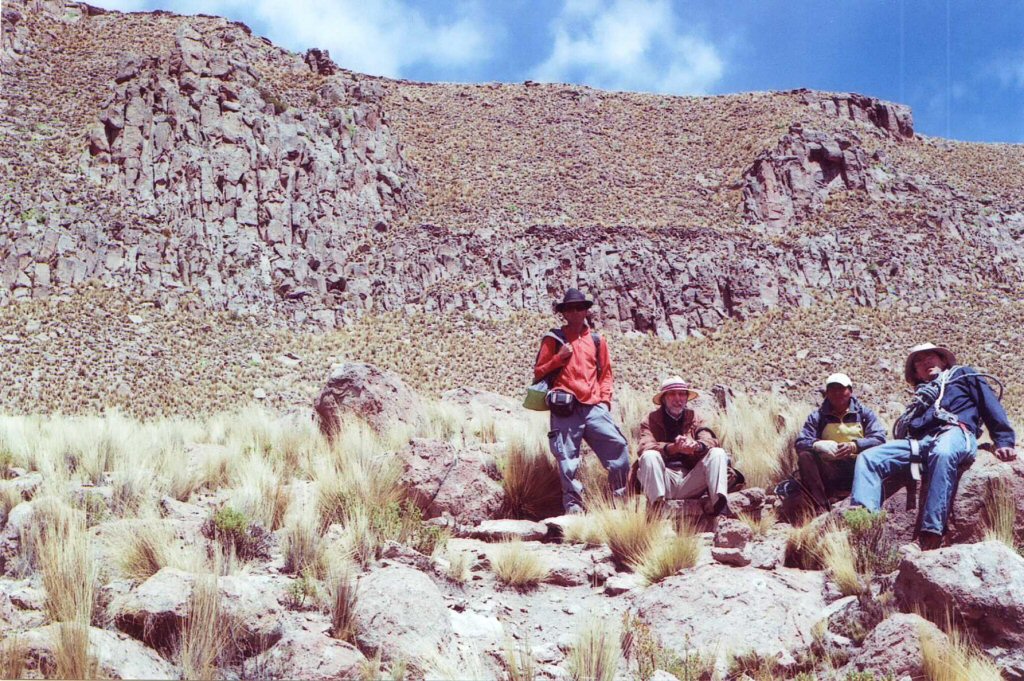
Having a break at the base of the mountain. Photo: Carlos Bedregal.
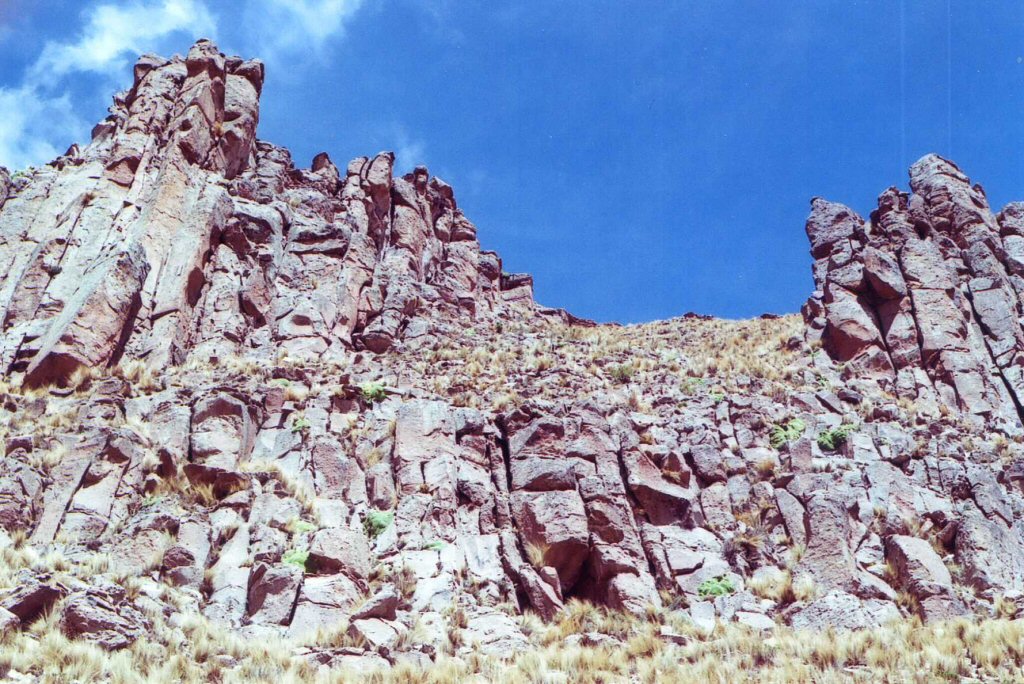
Parts of the exterior are covered in these large, cathedral-like blocks of stone. Photo: Carlos Bedregal.
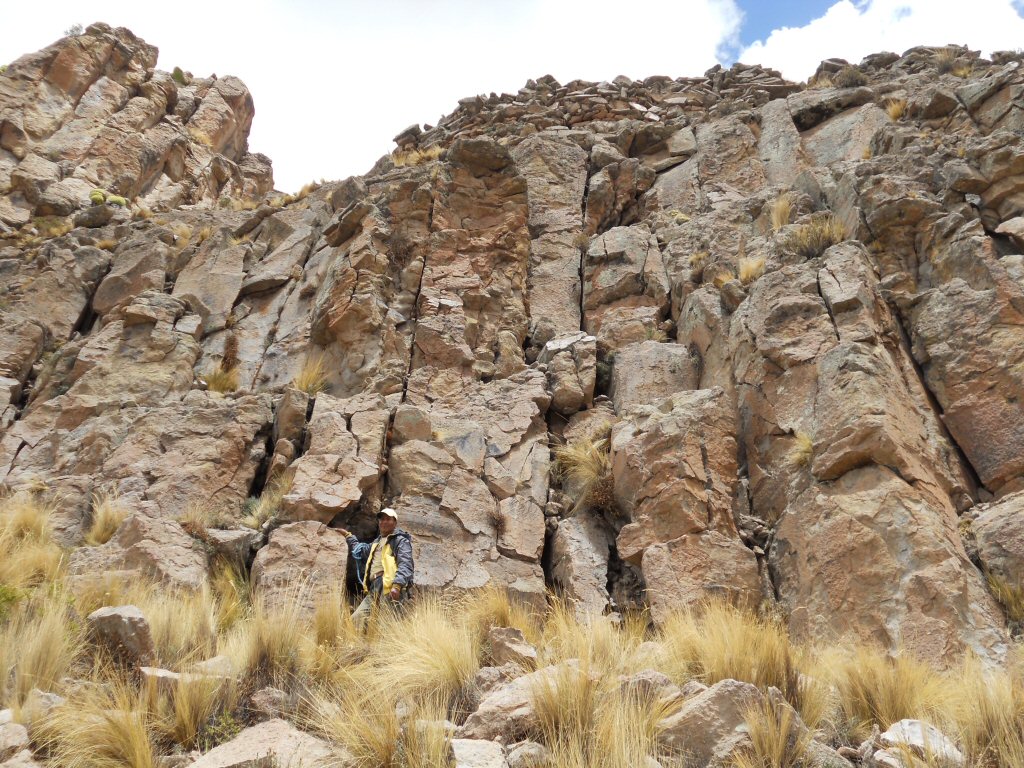
large, cathedral-like blocks of stone on the exterior.
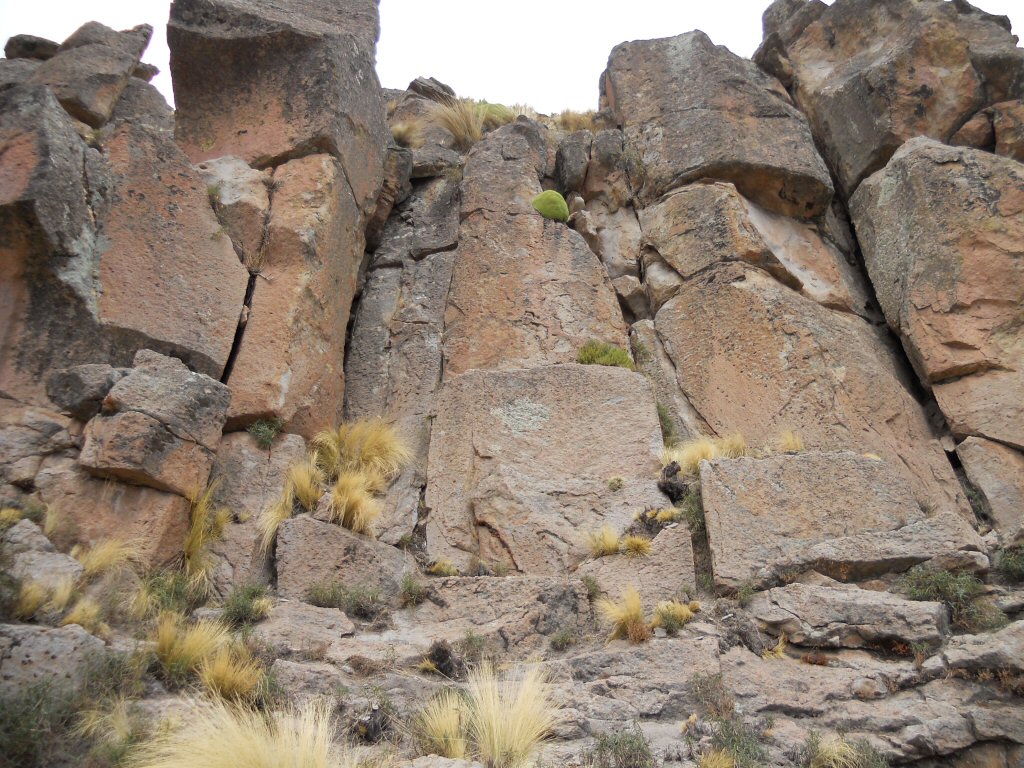
close-up of large blocks of stone on the exterior.
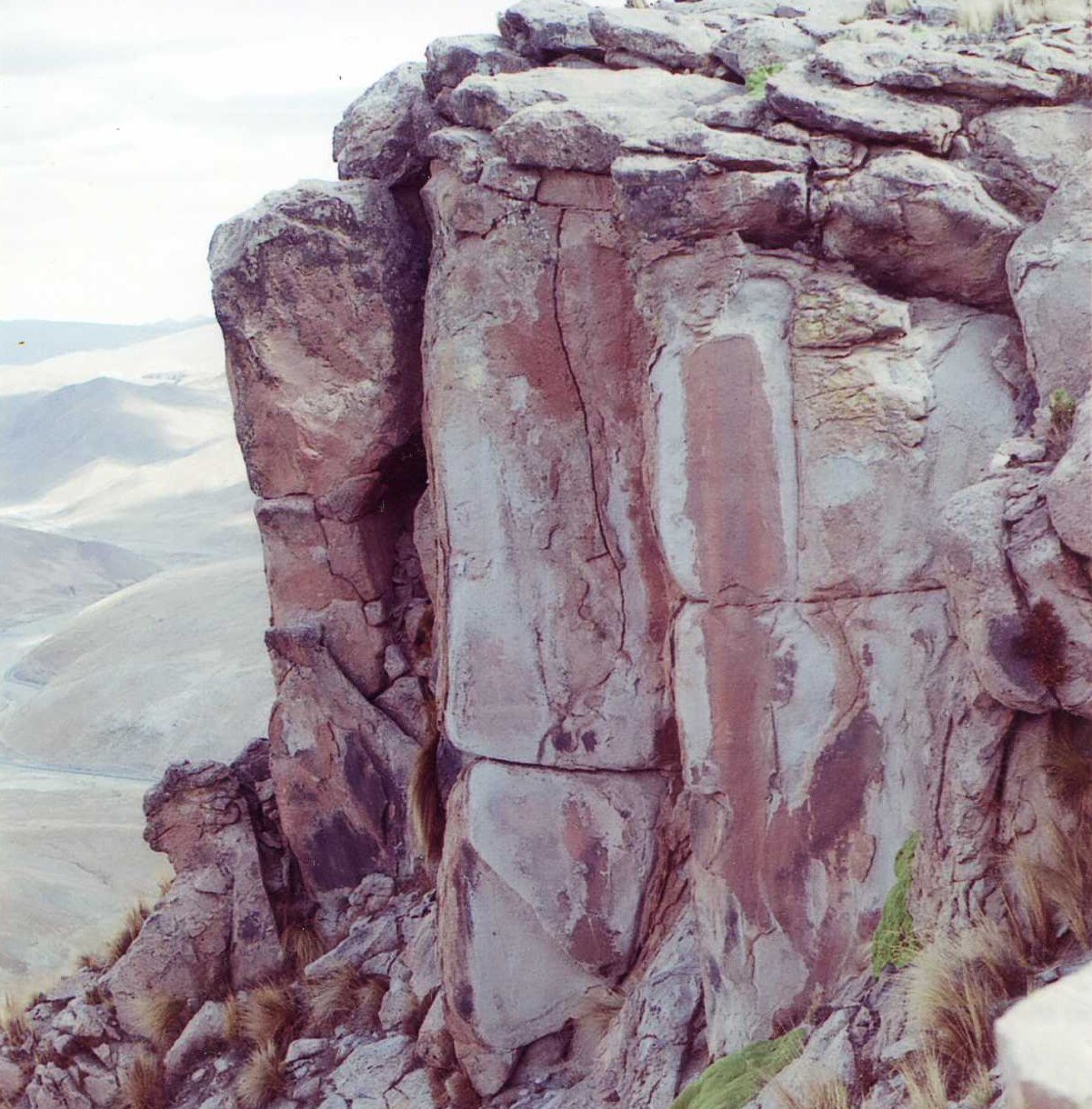
detail of cathedral-like blocks of stone. Photo: Carlos Bedregal.
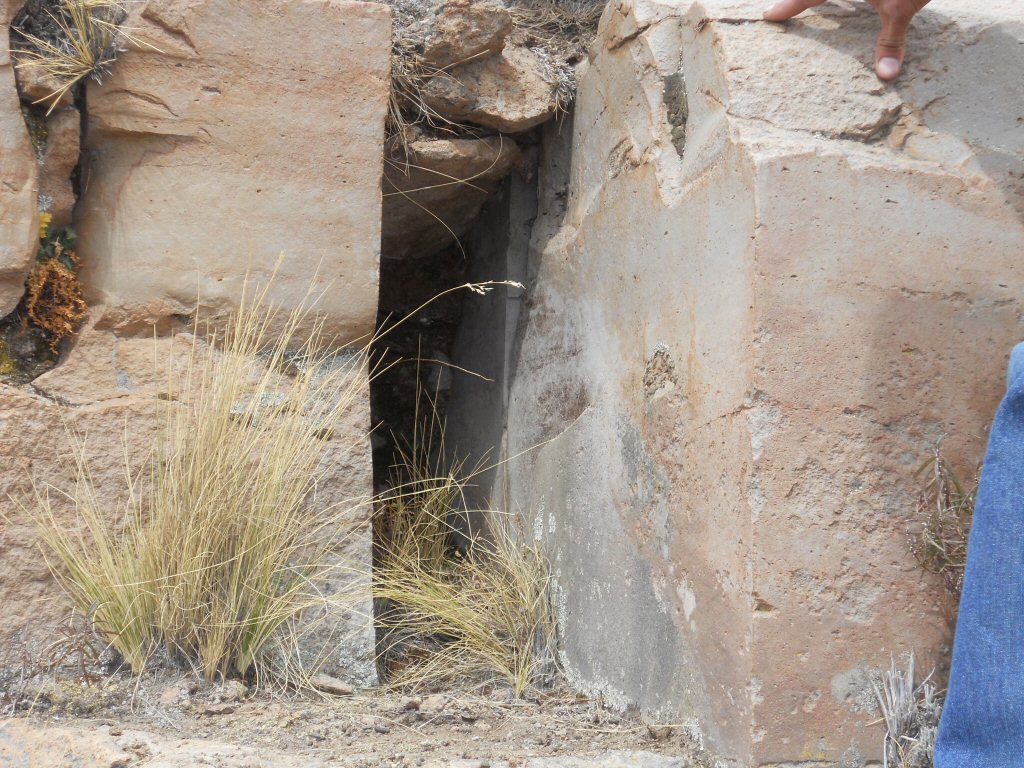
one of the exterior entrances to Inca Pukara, the mountain is hollow on the inside....
Luis thought it had been artificially constructed, like a pyramid and these stones look to have been cut and polished.
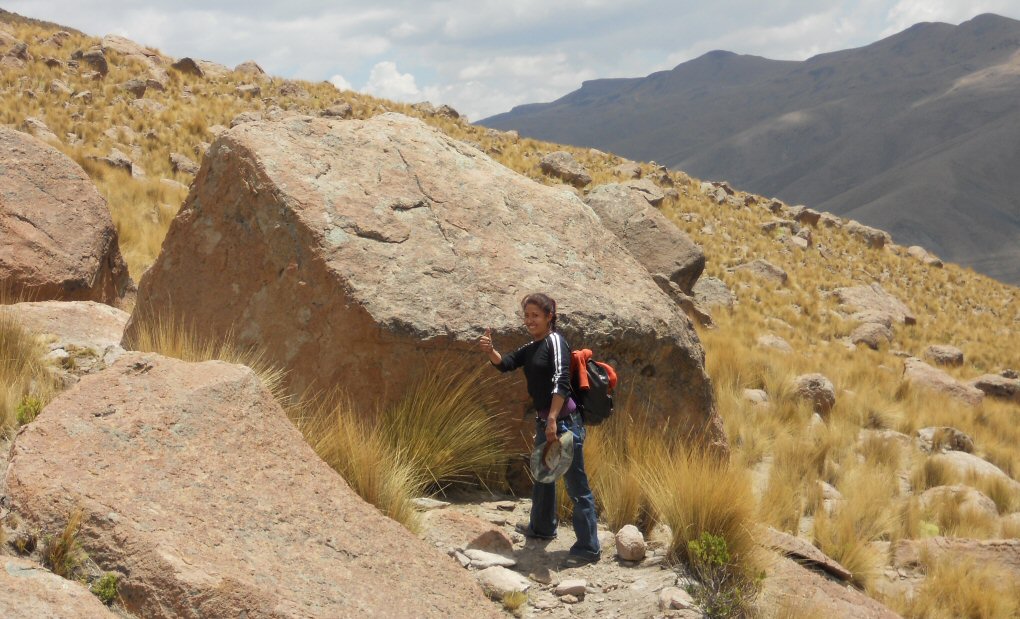
Lis with a fallen block of stone from the exterior of the mountain.
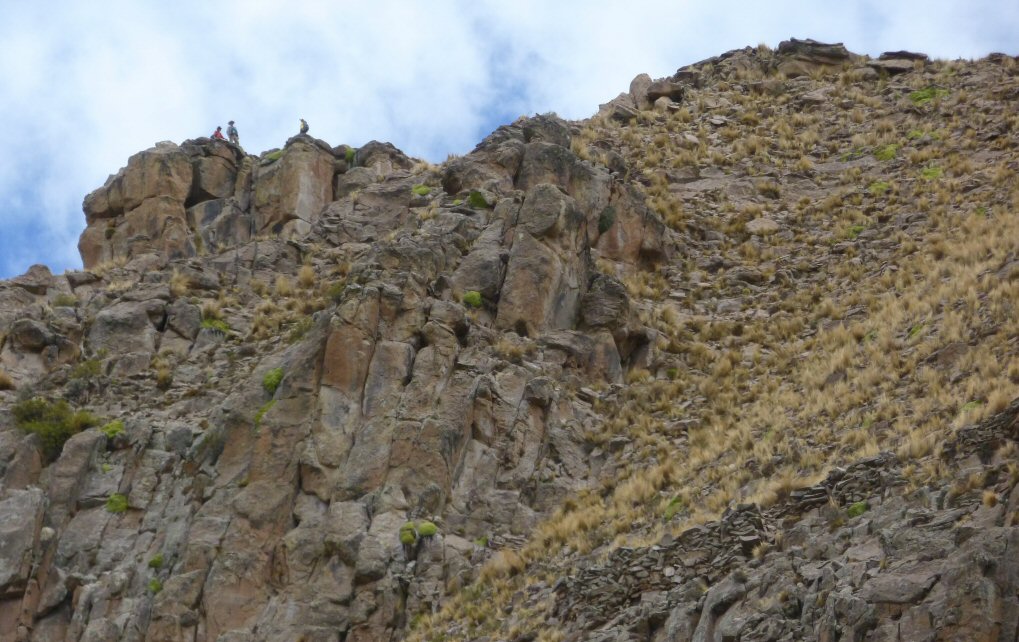
a steep and difficult path leads to the top.
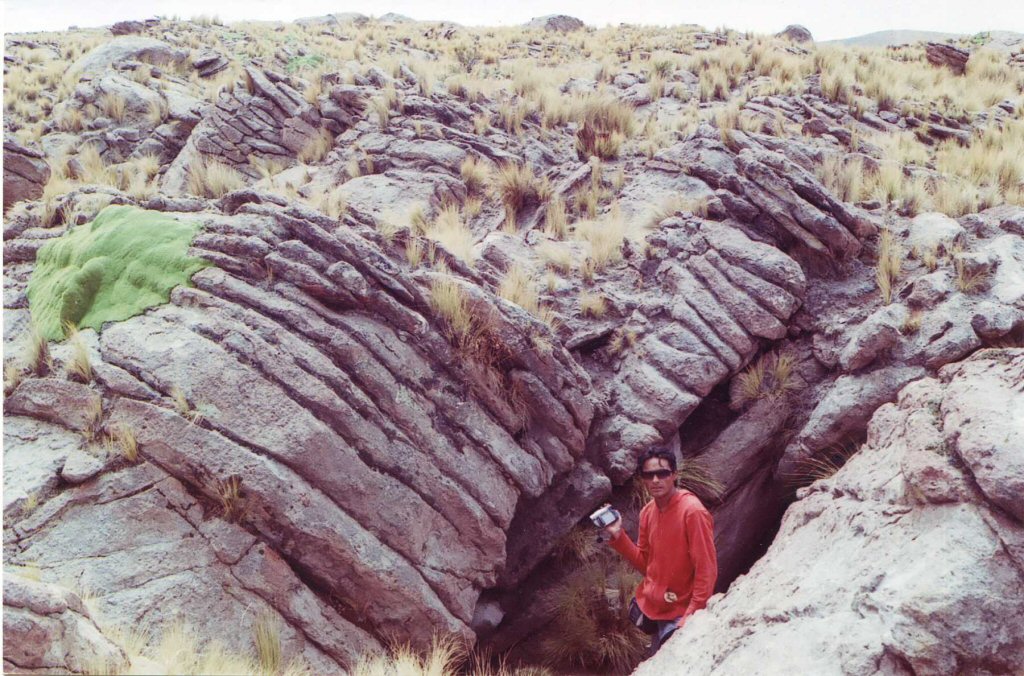
The summit is covered in what look like fallen columns of stones.
Amongst these are entrances which descend into the mountain. photo: Carlos Bedregal.
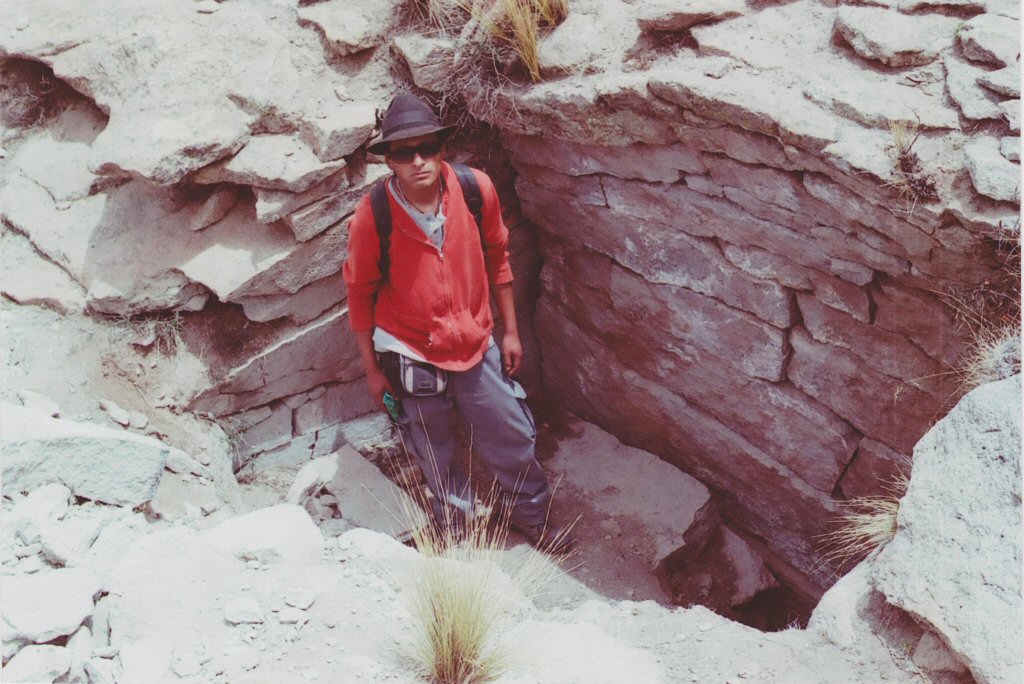
Luis stands inside a stone-lined entrance on the summit of the mountain. photo: Carlos Bedregal.
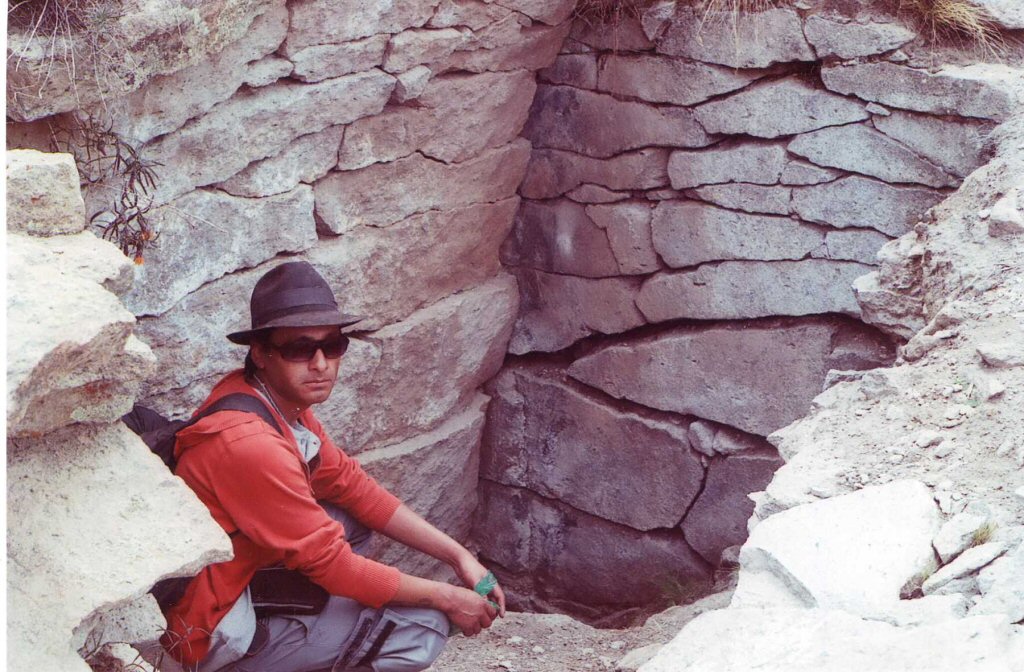
Luis inside a stone-lined entrance on the summit of the mountain. photo: Carlos Bedregal.
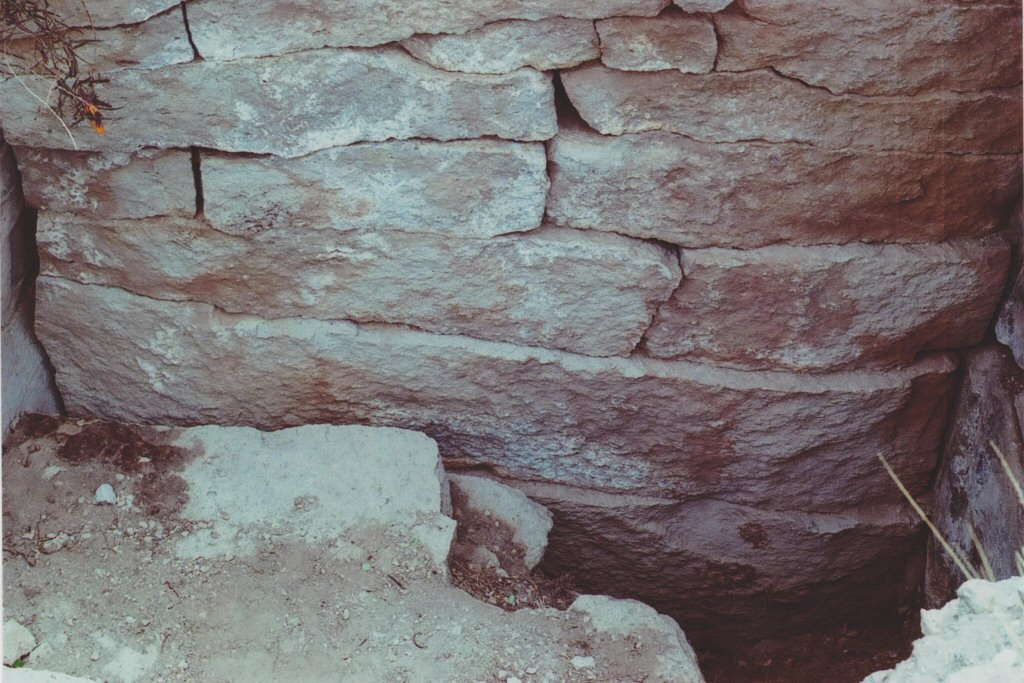
Detail of the stonework in the entrance. Although called "Inca Pukara",
this is hardly typical of Inca stonework and obviously
belongs to a much earlier period.
Instead of "Inca Pukara", Luis suggested "Gran Pukara de los Andes" ("the Great Pukara - or fortress - of the Andes")
would be more appropriate. photo: Carlos Bedregal.
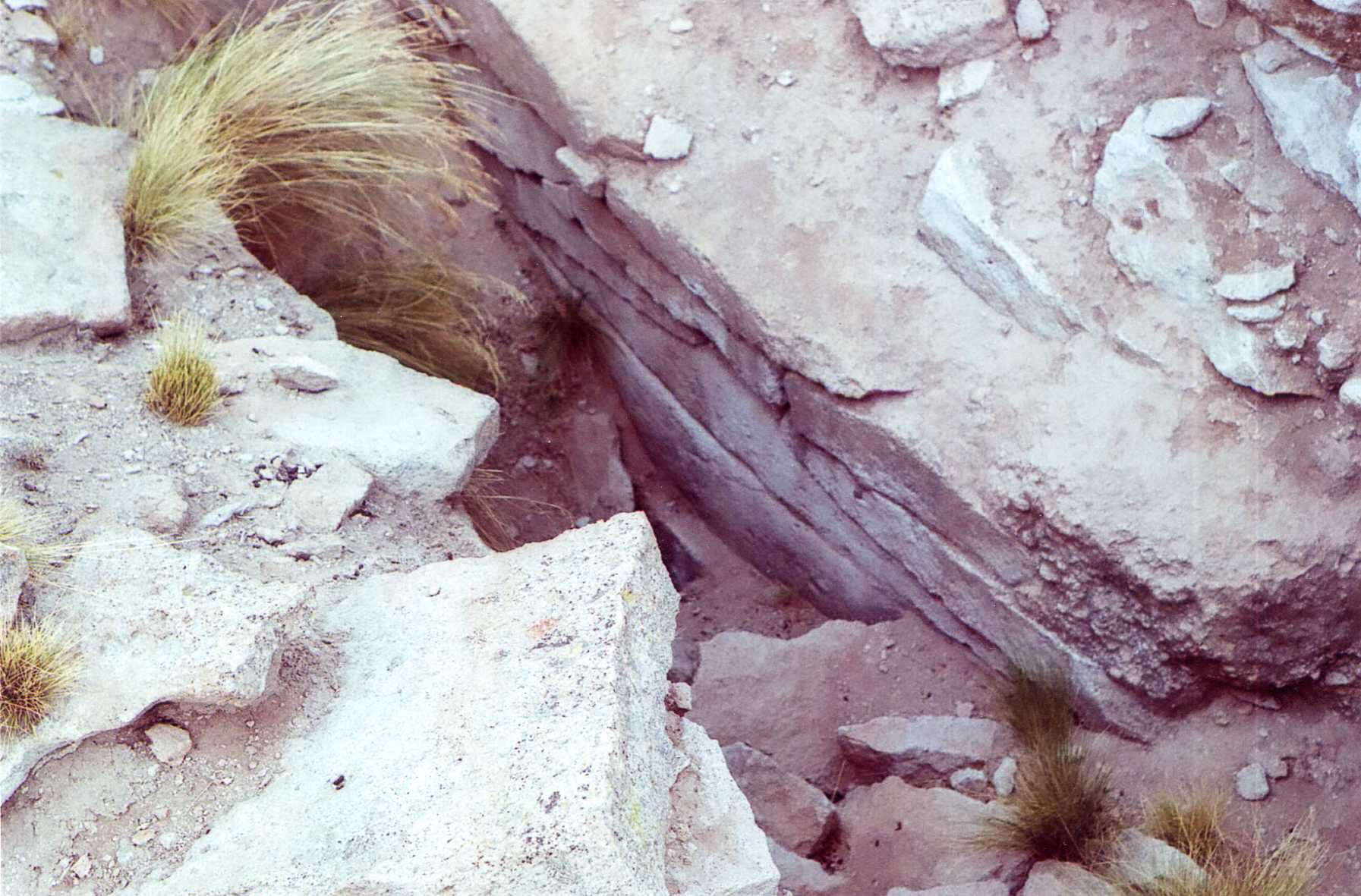
One of the stone-lined entrances descending into the mountain. photo: Carlos Bedregal.
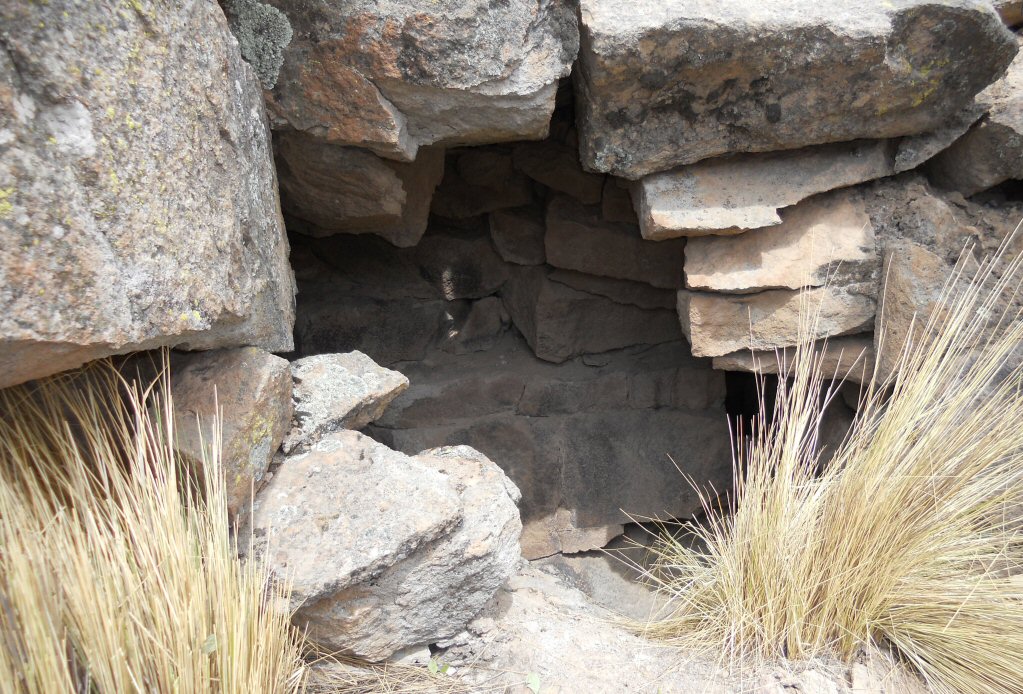
One of the stone-lined entrances descending into the mountain. photo: Carlos Bedregal.
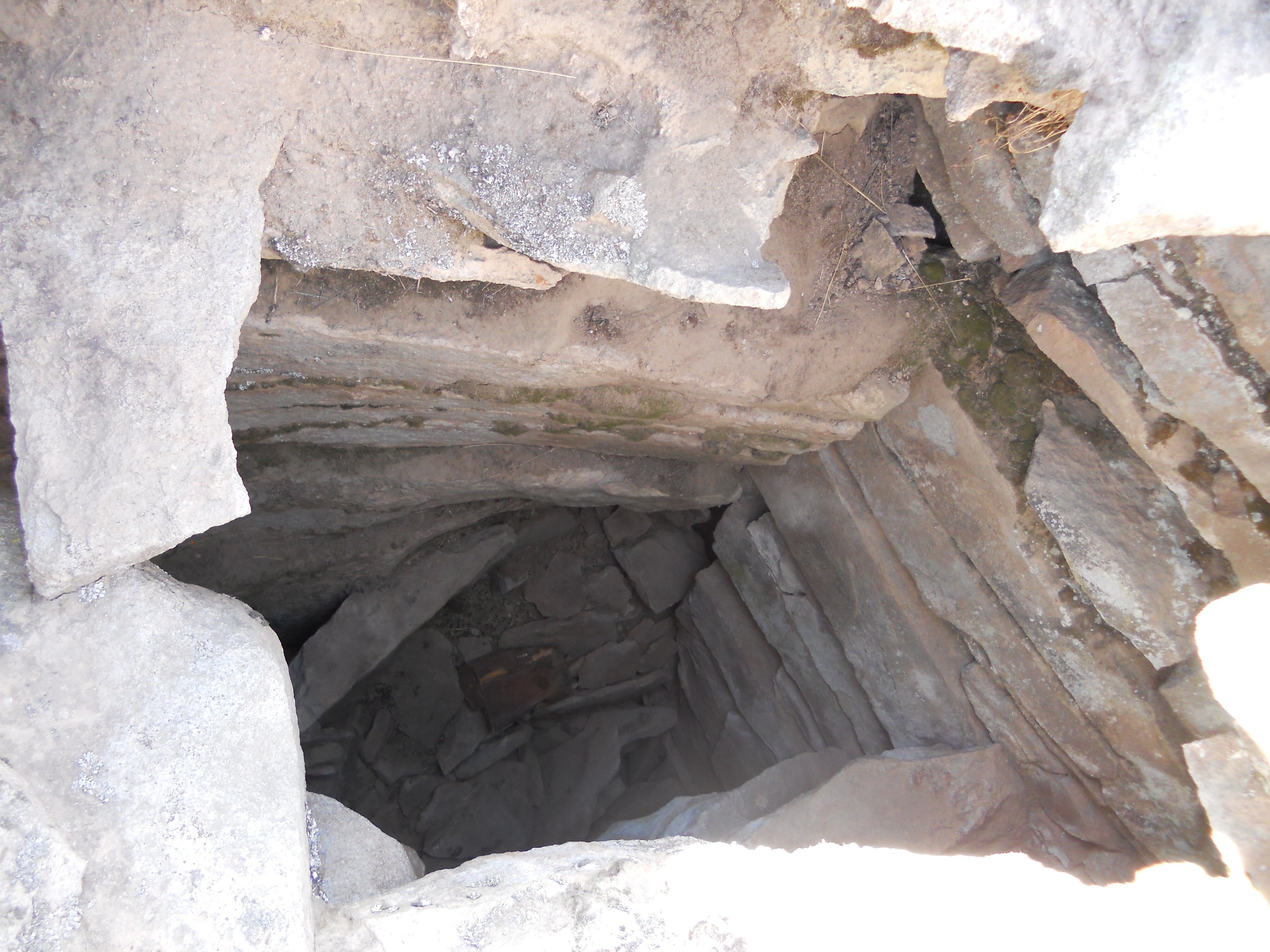
This well constructed stone-lined entrance descends into the mountain. photo: Carlos Bedregal.
Luis reports a stone, spiral staircase descends into the heart of the mountain where is to be found
a cavern-like gallery with an interior lake and tunnels leading to other destinations.
That this site has been so little explored and documented seems a great loss for the true history of Bolivia and South America.
Recent dating of canals in Peru suggests civilisation in the Andes to be much older than previously admitted.
See
dating of canals in northern Peru 4,684BC
Most dating and excavations have taken place at sites in Peru where there exist known pyramids and cultures.
Virtually no dating and excavations have taken place at
a multitude of sites in Bolivia, of which this page represents but one example.

Inside this hole in the ground, stone steps descend into the interior of the mountain. photo: Carlos Bedregal.
At the same time we must note that the interior is in such a ruinious and dangerous condition due to falling rock,
that it seems that for that reason the site has been closed by the local authorities.
"The new find (in Peru) suggests that agricultural settlements may have appeared in South America at about the same time they did in the Middle East.
Dillehay notes that the earliest evidence of irrigation canals in Sumeria is between 7,000 and 8,000 years old."
National Geographic quote... Researchers found three canals that date to at least 5,400 years ago buried by sediment layering. A fourth possible canal was also found, which special radiocarbon dating techniques revealed to be 6,700 years old.
"Some colleagues in the Andes surmise early canal irrigation based on the presence of crops at 9,000 to 10,000 years ago," said Tom D. Dillehay,
an anthropologist at Vanderbilt University in Nashville, Tennessee, who lead the study." (in Peru)
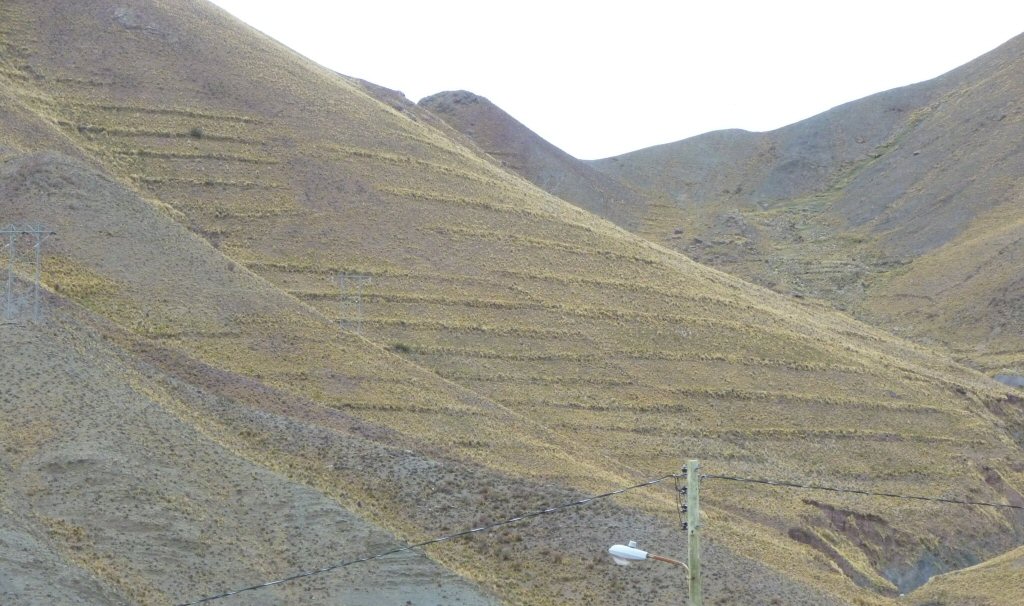
The surrounding area is covered in the remains of ancient, now abandoned, terraces.
You my also like to see
pyramid mountain
Tiwanaku cubits
geoforms
ringed hills
hillforts
agricultural variations
fossilised agriculture
earthquakes
J.M. Allen
March 2016
webatlantis@hotmail.com